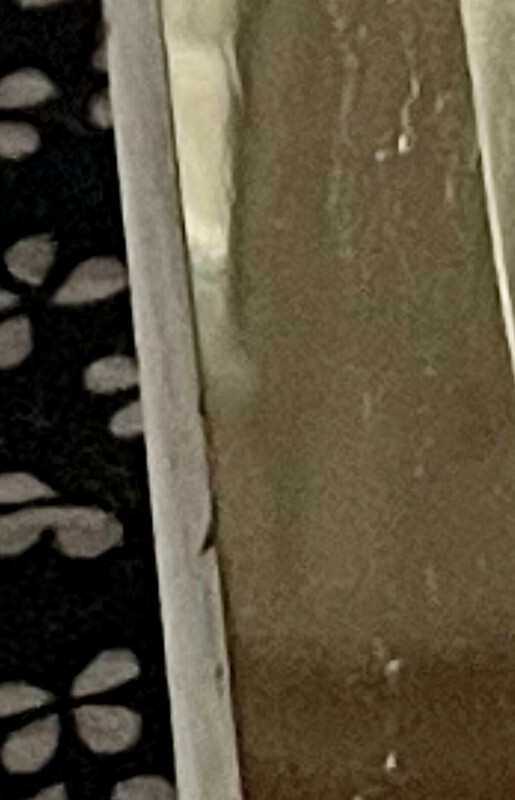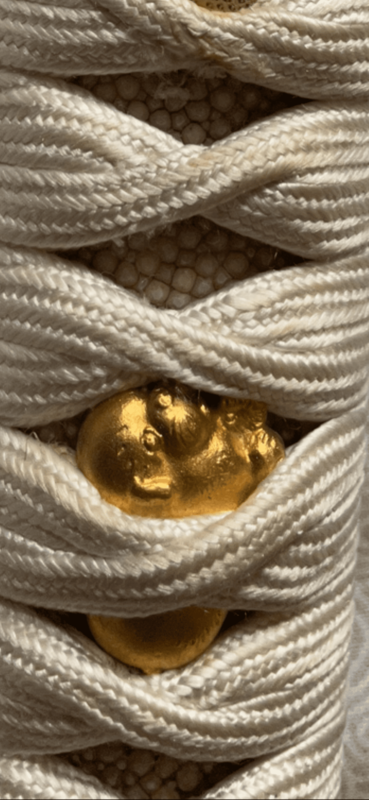-
Posts
186 -
Joined
-
Last visited
Content Type
Profiles
Forums
Events
Store
Downloads
Gallery
Everything posted by French nihonto
-
I'm generally a traditionalist, but aren't rules supposed to evolve sooner or later? Or does everything stay the same indefinitely? The paper system evolved in 1982, after being created in 1948, 34 years later. Now, after 41 years, there's nothing ridiculous about a small update. Well, maybe one day
-
New paper. Clearly recognizable. That doesn't interfere with classic papers and could open up a new field of study. It would be a nice evolution.
-
This will be my last post for this topic, I must sound unpleasant The heart of the Gimei debate I think. We have all had, or still have, Gimei blades in our collection. Are they of artistic interest and study? yes Are they historical artifacts? Yes Are they worth preserving? Yes Yet the largest organization and authority in the field thinks they're not worthy of preservation. I've always found that strange. This will cause their death in the medium and long term, because we collectors who preserve these objects are increasingly trying to avoid them because they are problematic.
-
This is indeed a difficult problem to solve. A dishonest dealer will resell a Gimei blade advertising that the Mei is good because the truth that the blade is Gimei will lower the value of the blade considerably. A Gimei blade is worth much less than a genuine Mei blade for two fundamental reasons. The main reason is that the blade is less desirable, but also because it cannot be papered. If gimei blades are paper with a special paper. It is my (perhaps dreamy) hope that the value of the blade on the market will increase. Fraudsters will no longer need to cheat, because the price difference between a gimei and a genuine mei will no longer be so great. If the seller throws away the special paper. It will become just another paperless blade, harder to sell, and its value will drop. So there's no reason to do it. In any case, it's a very interesting debate.
-
I think the debate on Gimei blades will intensify in the coming years. The problem is that a lot of nice blades are well made. Not masterpieces, but blades worthy of preservation are being neglected because they are not attractive to collectors due to their inaccessibility to paper. This lack of appeal will eventually endanger some blades. They end up being abused by amateurs or left to rust. Do we have any solutions? Remove the signature. Not to mention the small financial hit, I've always had a problem with the idea of removing a signature that may be 150, 200, 300 years old, even if it's fake, it's part of the blade's history. The blade won't be any better after that. It's as if Michelangelo had signed a painting by Leonardo da Vinci. We don't care about the signature, it's still a Leonardo da Vinci painting, isn't it? Second solution that could be brought in: a special paper. In a bright, distinctive color (purple, red...) with the same information as classic hozon paper, specifying that the blade has a false signature. This will have the effect of making Gimei blades more enviable to collectors, encouraging Gimei blade owners to embark on the Shinsa process. And to focus more on the quality of the blade than on its signature. A little freshening up in the middle, bringing some of the more neglected blades back into the limelight. And who knows? Maybe some pleasant surprises Best regards Max
-

Aggressive Shin-Shinto O-Katana
French nihonto replied to Big Jimp's topic in General Nihonto Related Discussion
The geometry of the kissaki seems a little strange compared to the rest of the blade. I have the impression that the blade has been shortened by the kissaki. -
In view of the sugata's shape. (Maybe the photo is misleading) I'll say Shinto, second half Edo
-
the sword is antique but polished to the bone, very tired. the mount is an amateur assembly.
-
Your intention is very noble. I respect it. To promote these beautiful objects that we cherish. The problem with the big museums is that they often renew the exhibition of their pieces. You don't renew a Vermeer or a Da Vinci, of course. I go to the Louvre very often, and some of the beautiful pieces I saw ten years ago have gone into the huge reserves and may not come out again for a hundred years. When you give the sword to your museum, it will take care of it for the first few years, but one day, decades from now, when you and I are no longer there. A tactless curator will judge that your sword has been seen enough by visitors and send it back to the cluttered storerooms, where it will eventually be forgotten and slowly rust away. It's almost 100% inevitable With all due respect. Max
-
Thank you! I'll take a look and get back to you. cordialy Max
-
THANKS! it's for equipping a katana
-
Acid polishing... sorry. A pretty blade at the base, which is wasted Cordialy Max
-
Do you have inside and outside dimensions?
-
Very good to know. It may also help some European contacts I have. Thanks a lot!
-
It’s true that sending a blade to Japan from Europe is becoming more and more complicated. Apart from blades which are almost certain to pass Juyo, it is less and less worth the cost. I hope that one day some NBTHK shinsa sessions with paper delivery will be carried out in Europe.
-
I just discovered a small, very angular notch on the mune of the blade. 5 centimetres from the Habaki. taking pictures of it is complicated. But it's a neat triangle that's deeper than it is wide. Battle mark in your opinion?
-
Yes, I haven't found much on this blacksmith. Very very obscure blacksmith. Good candidate for shinsa, no?
-
-
All I have to do now is find a quality tsuba. And maybe pass on the shinsa blade if it's worth the cost.
-
Yes, I also think that a paper was lost. And I'm very curious to know what paper she had. I'm lucky I didn't pay much. Hence my surprise the first time I had it in my hands.






